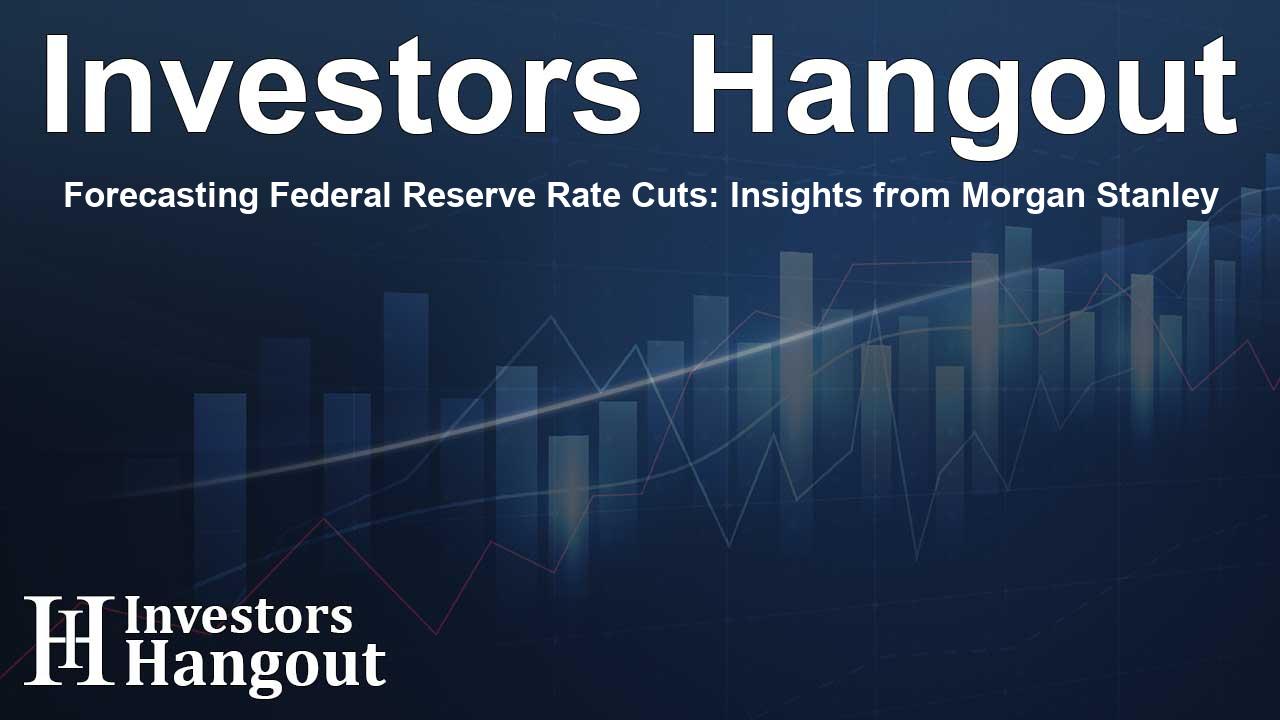Forecasting Federal Reserve Rate Cuts: Insights from Morgan Stanley

Understanding Morgan Stanley’s Predictions on Interest Rates
Investment bank Morgan Stanley has recently shifted its forecast regarding the Federal Reserve's approach to interest rates. Initially, there was an expectation for the Fed to keep rates steady through March 2026. However, now Morgan Stanley believes that rate cuts will begin as early as September.
Shifts Induced by Jerome Powell’s Jackson Hole Address
Shifting Focus on Labor Market
The catalyst for this adjustment appears to be Jerome Powell’s recent speech during the Jackson Hole Economic Symposium. There, Powell indicated a strategic shift for the Fed, prioritizing the labor market rather than solely focusing on inflation. This new perspective could pave the way for more significant adjustments to monetary policy, which many analysts are closely monitoring.
Forecasting Rate Changes Over the Coming Years
September Rate Cuts Ahead
In a detailed analysis published on a Monday, Morgan Stanley projected a 25 basis-point rate cut in September 2024. This forecast includes another anticipated cut in December, with further quarterly reductions expected through 2026. Their projections suggest a final terminal rate could settle between 2.75% and 3.00%, down from the current range of 4.25% to 4.50%.
CME Group’s FedWatch Tool Aligns with Predictions
Supporting Morgan Stanley’s outlook is the CME Group’s FedWatch tool, which currently indicates that there is an 80.9% probability of a rate cut in September, along with a 79.5% chance for another cut in December. This data underscores growing market expectations for the Fed to lower rates soon, reflecting a potential shift towards more accommodative monetary policy.
The Consensus Among Other Financial Analysts
JPMorgan Chase and Goldman Sachs
Analysts from notable Wall Street firms, including JPMorgan Chase and Goldman Sachs, have also voiced similar sentiments, predicting that rate cuts will take shape in September. These forecasts are being shaped by recent data indicating sluggish GDP growth and a weakening labor market. The expectation is that the Fed may implement three additional 25 basis-point cuts after the initial September reduction before pausing further adjustments.
Economic Factors Influencing Forecasts
The Impact of Federal Interest Payments
Current federal interest payments are creating immense pressure on the economy, nearing $1.2 trillion. Analysts emphasize that the U.S. government is likely to require lower interest rates to manage this substantial debt effectively. Projections suggest that if rates remain elevated, these payments could escalate to as much as $1.4 trillion by 2026, further complicating fiscal dynamics.
Contrasting Views on Rate Cuts
Interestingly, former President Donald Trump has publicly advocated for rate cuts, viewing them as necessary to stimulate the housing market. However, economist Peter Schiff presents a contrasting perspective, warning that cutting rates could ironically lead to higher mortgage rates, which may deter the intended benefits of such cuts.
Conclusion
As the market prepares for possible shifts in monetary policy, Morgan Stanley’s forecasts, alongside those from other prominent banks, are setting a precedent for what could be a transformative period in U.S. economic policy. Investors and analysts will be keeping a close eye on the coming months to see how these anticipated changes unfold in real-time.
Frequently Asked Questions
When does Morgan Stanley predict the Fed will start cutting rates?
Morgan Stanley forecasts the Federal Reserve to begin cutting interest rates starting in September 2024.
What prompted the change in Morgan Stanley's forecast?
The change was influenced by Jerome Powell’s speech, which marked a shift in focus towards the labor market rather than inflation.
How much does Morgan Stanley predict rates will drop by?
They anticipate a 25 basis-point cut followed by ongoing reductions, leading to a terminal rate between 2.75% and 3.00%.
What do other banks think about the rate cuts?
Other Wall Street banks, like JPMorgan Chase and Goldman Sachs, are also predicting rate cuts, aligning with Morgan Stanley's outlook.
What are the economic implications of high federal interest payments?
High federal interest payments are creating significant pressure on the economy, which could benefit from lower rates to manage debt more effectively.
About The Author
Contact Olivia Taylor privately here. Or send an email with ATTN: Olivia Taylor as the subject to contact@investorshangout.com.
About Investors Hangout
Investors Hangout is a leading online stock forum for financial discussion and learning, offering a wide range of free tools and resources. It draws in traders of all levels, who exchange market knowledge, investigate trading tactics, and keep an eye on industry developments in real time. Featuring financial articles, stock message boards, quotes, charts, company profiles, and live news updates. Through cooperative learning and a wealth of informational resources, it helps users from novices creating their first portfolios to experts honing their techniques. Join Investors Hangout today: https://investorshangout.com/
The content of this article is based on factual, publicly available information and does not represent legal, financial, or investment advice. Investors Hangout does not offer financial advice, and the author is not a licensed financial advisor. Consult a qualified advisor before making any financial or investment decisions based on this article. This article should not be considered advice to purchase, sell, or hold any securities or other investments. If any of the material provided here is inaccurate, please contact us for corrections.
